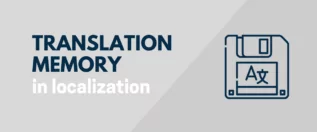
In this post
While there may be a lot of mixed feelings regarding the use of popup plugins, they still continue to be a super-efficient tool for growing your email subscribers.
If you’re running a multi language website though, figuring out how to translate popup content can be quite challenging. That’s because finding a solution that works independently of the popup solution you’re using is not straightforward.
Most WordPress translation plugins need to add compatibility for a certain popup plugin in order to make its content translatable, while others simply won’t work. Since there are a ton of pop-up plugins to choose from, it’s easy to get lost.
Due to its front-end visual translation interface, TranslatePress will help you translate popup content independently of the tool used to create it. The same goes for forms, WooCommerce products, or Gutenberg blocks for that matter.
Below we’re going to go into the exact steps needed to translate the content of any popup into multiple languages.
Steps for translating popup content
1. Install TranslatePress
First, we’ll install TranslatePress. After activating the plugin, you’ll notice a new Translate Site item added in the admin bar.
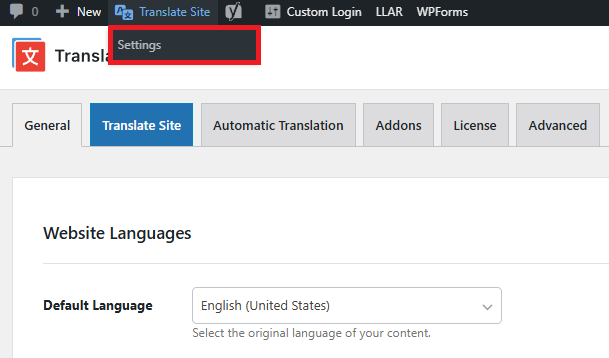
Just hover over it and click Settings (or you can click the Settings menu item and select TranslatePress). This will take you to the TranslatePress Settings page.
Here we can add the languages in which we want to translate the popup content.
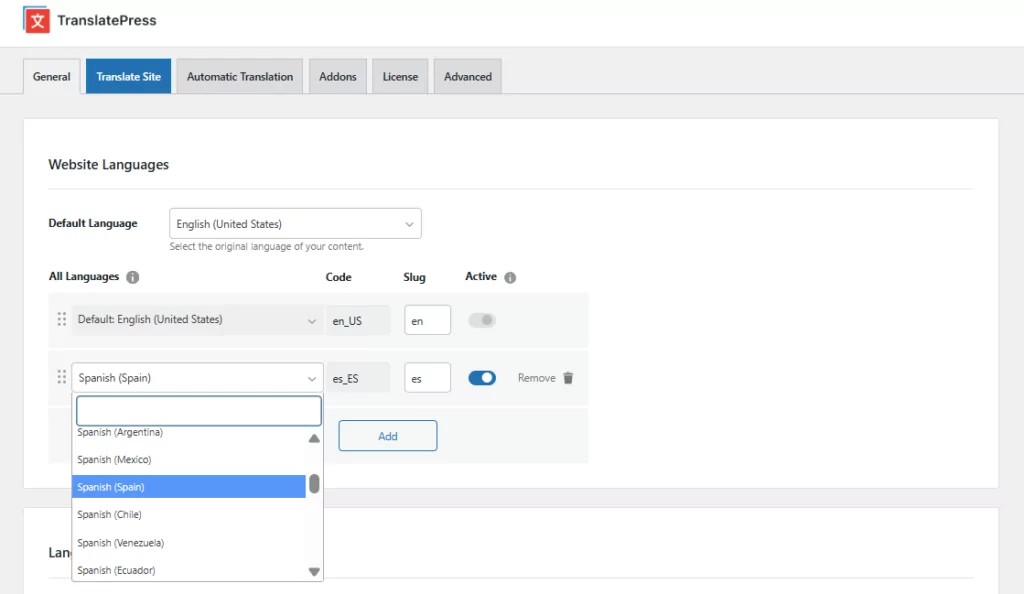
English is our default language, and we’ll also add Spanish. There are a few other settings (like integration with Google Translate for automatic translation), but we’ll skip them for now and click Save Changes.
2. Create the Lightbox Popup
In this tutorial, we’ll create a lightbox popup for collecting user emails.
The popup will be set to show up after the user scrolls a significant portion (~80%) of your article, it’s clearly engaged with your content and there’s a high chance he will want to become a subscriber.
For this, we’ll be using Elementor, the most popular page builder for WordPress that allows you to also create and integrate popups on your website. The Popup Builder is part of Elementor Pro.
After installing and activating the plugin, in the WP Dashboard, under Templates select Popups. Then click Add New to create our first pop-up template. You can select from a predefined list of templates and customize it to your needs.
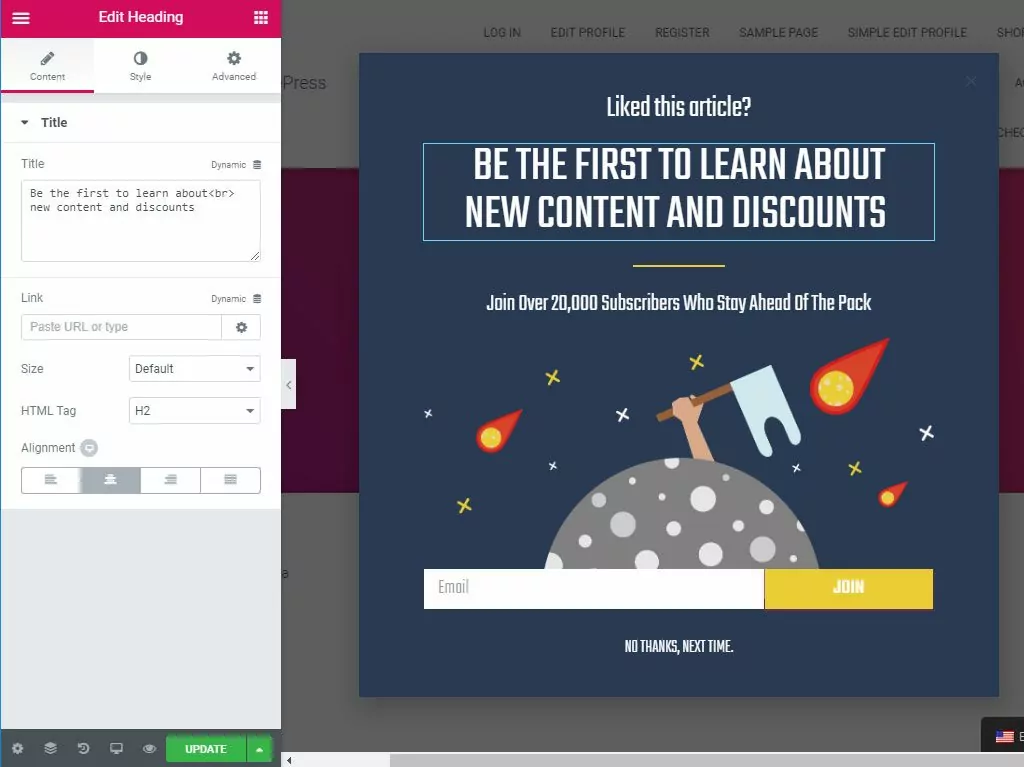
Once you’re satisfied with the created popup, you can hit publish and set the conditions, triggers, and advanced rules for your popup. These settings will determine when and how the popup appears.
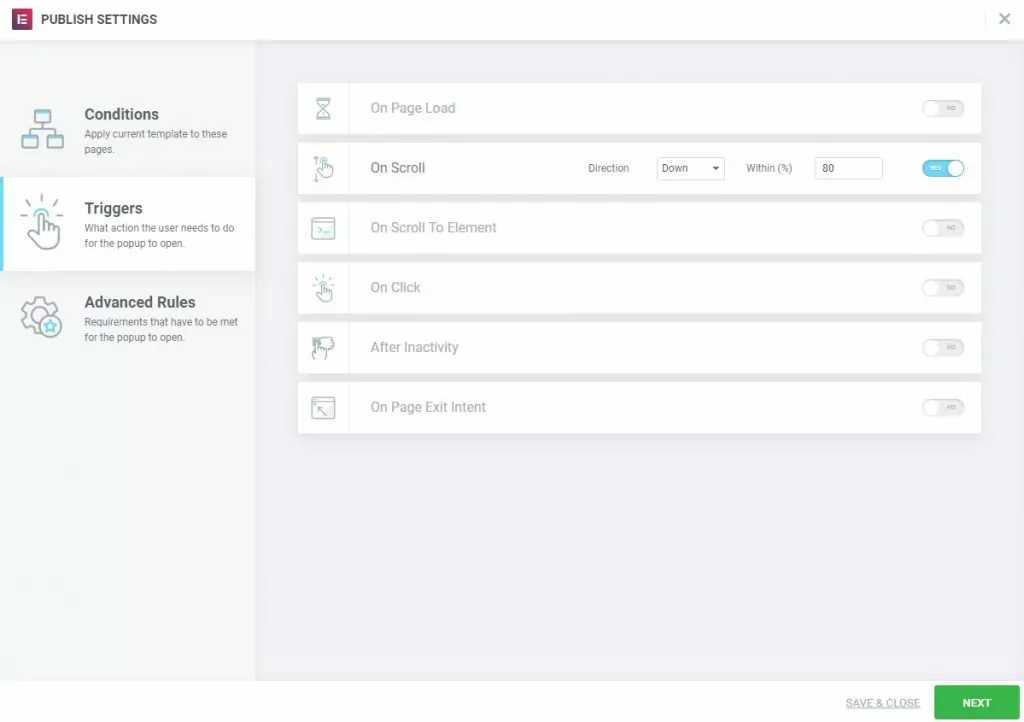
3. Translate Popup Content
Now that we’ve created the popup and added the triggers, all that’s left to do is to translate it.
For this we go to Templates → Popups, select the newly created popup template and click Preview Changes.
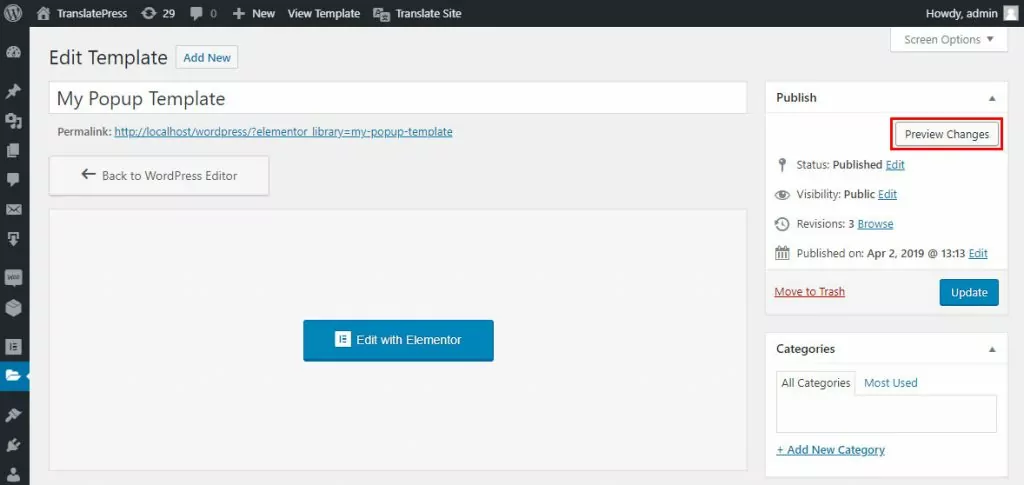
This will open a preview of our popup. Now, from the admin bar click Translate Page and you’ll be prompted with a translation interface allowing you to translate the popup content.
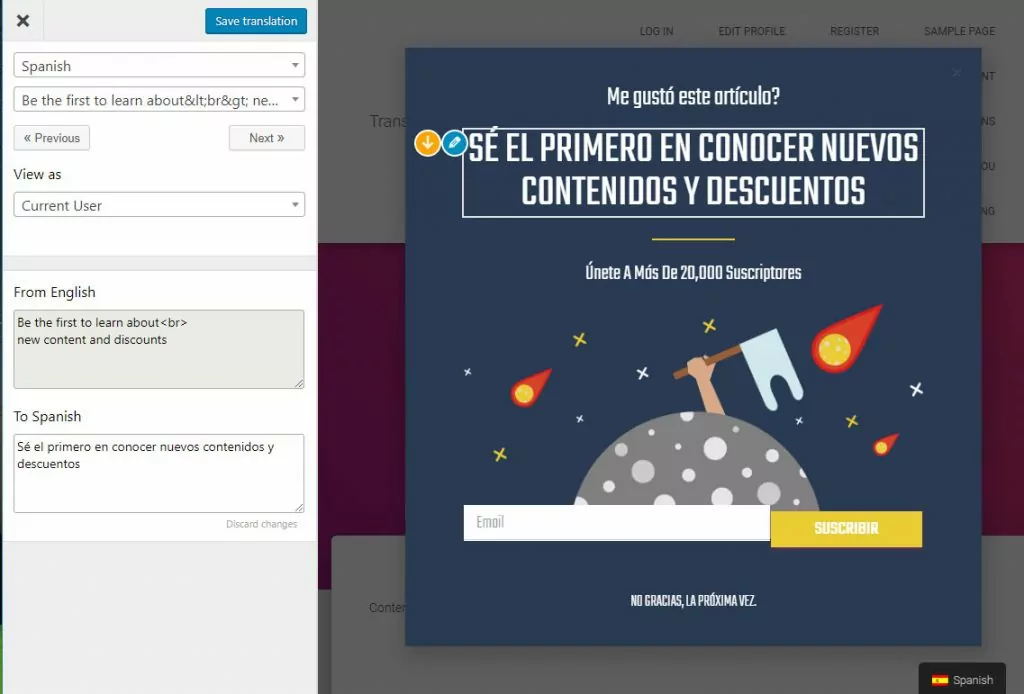
You simply select each popup text and enter its Spanish translation, then click Save translation.
Once you’re done, close the translation window and start navigating the Spanish version of the website. When the popup appears, it will be translated.
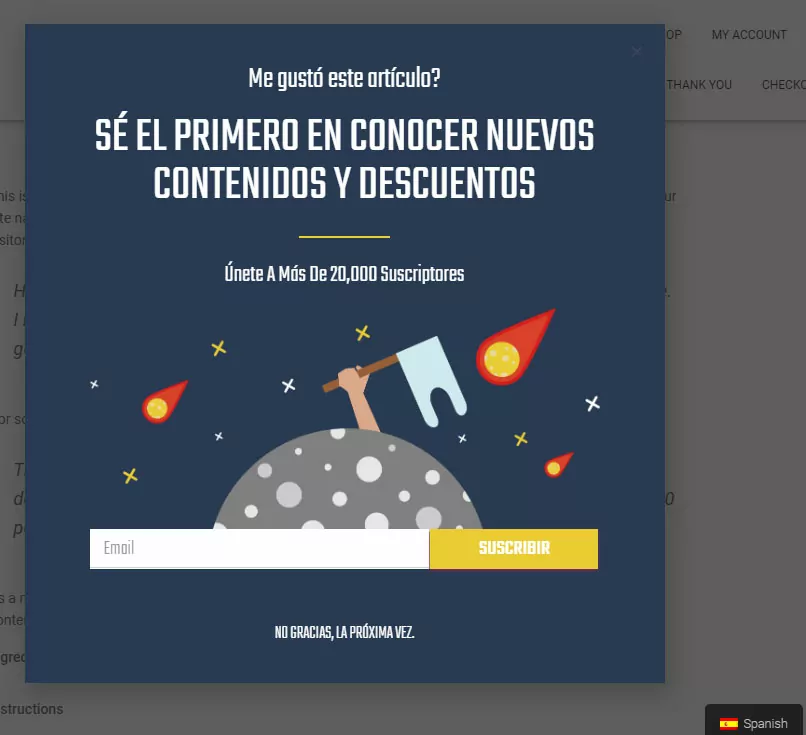
The same intuitive process can be used to translate any other type of popup.
If your entire website is built using Elementor, make sure to check out this in-depth tutorial on how to translate Elementor sites (fast and easy). It goes through translating all the wide range of content that Elementor lets you create.
Get started translating popup content
Using TranslatePress, translating popup content is really intuitive. You simply preview the popup in the front-end of your website, then using the visual translation editor you click to select a certain text from the popup and enter its translation. This will make it really easy to display your popup content in multiple languages.
TranslatePress Multilingual
Do you still have any questions about translating popup content? Let us know in the comments!
If you found this post helpful, please check out our YouTube channel, where we constantly upload short & easy-to-follow video tutorials. You can also follow us on Facebook and Twitter to be the first to know each time we post.

